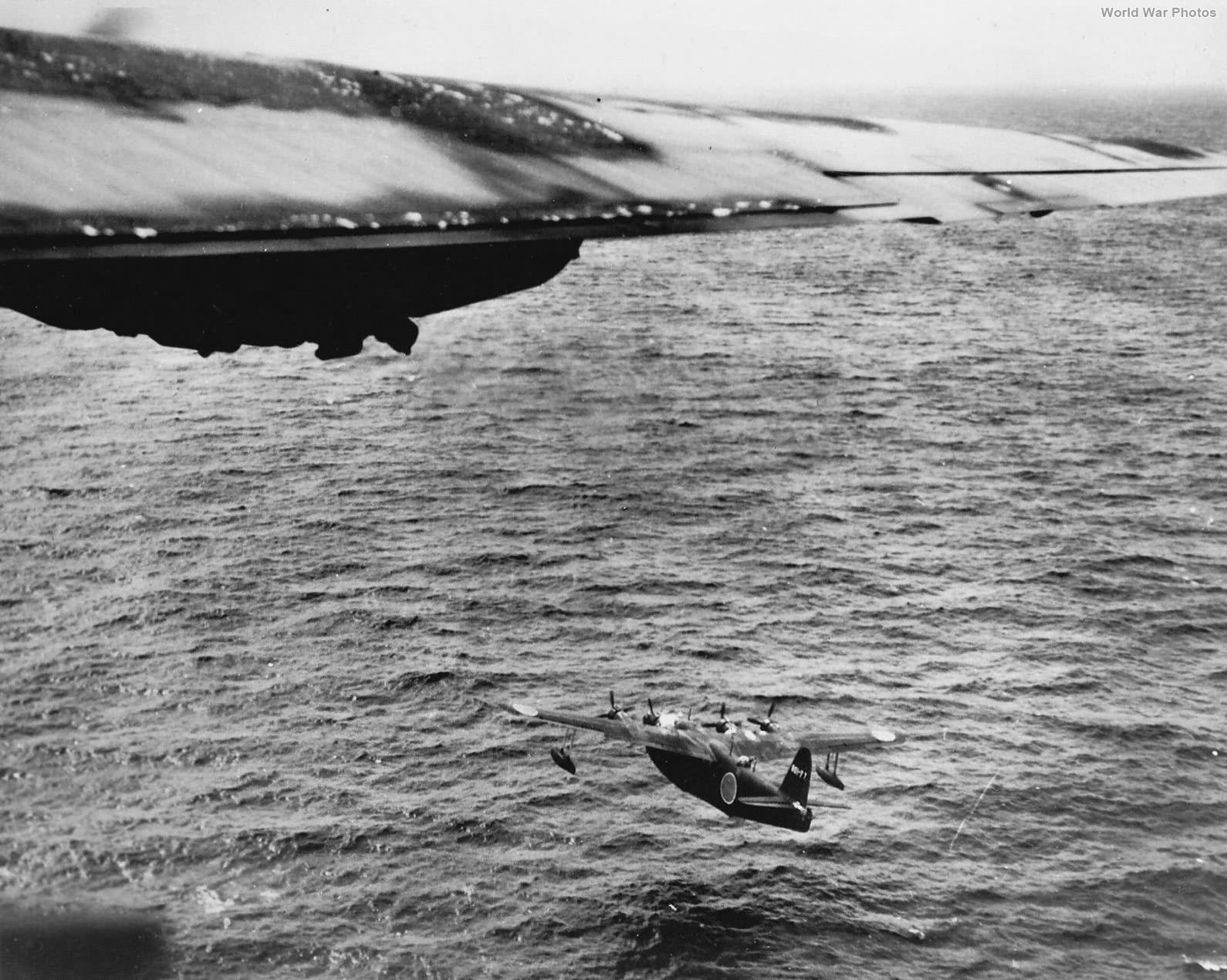Tactical Advantages of the PB4Y-1 and PB4Y-2 over Japanese Flying Boats
Superior Firepower: The PB4Y-1 and PB4Y-2, with their multiple powered turrets armed with .50-caliber machine guns, possessed significantly greater firepower than the Japanese flying boats. This allowed them to deliver concentrated and accurate fire during attacks, quickly overwhelming the defensive capabilities of the “Mavis” and “Emily.”
Aggressive Tactics: US Navy doctrine encouraged aggressive attacks against enemy aircraft, and PB4Y crews were well-trained in these tactics. They would often maneuver to attack from advantageous positions, maximizing the effectiveness of their firepower and minimizing their exposure to return fire.
Excellent Gunnery: PB4Y gunners were trained to target specific areas of the enemy aircraft, focusing on disabling turrets and then concentrating fire on engines and fuel tanks. This, combined with their superior firepower, made them highly successful in bringing down Japanese flying boats.
Land-Based Operations: The PB4Y-1 and PB4Y-2, being land-based aircraft, benefited from the infrastructure and logistical support available at established airfields. This allowed for quicker turnaround times between missions, better maintenance, and easier access to supplies. In contrast, the Japanese flying boats, operating from seaplane tenders or remote island bases, faced logistical challenges and were often limited in their operational range and endurance.
Technological Advantages: The US Navy had a significant edge in radar and signals intelligence, which played a crucial role in their success against Japanese flying boats. This allowed them to detect enemy aircraft earlier, track their movements, and plan intercepts. The breaking of the Japanese code system further enhanced their situational awareness, giving them insights into Japanese patrol routes and transport schedules.
Protection: The PB4Ys, especially the later PB4Y-2, were more robustly built than their Japanese counterparts. The Privateer, in particular, was designed for low-altitude operations in potentially hostile environments, and its construction reflected this requirement.
These tactical advantages, combined with skilled aircrews and effective doctrine, made the PB4Y-1 and PB4Y-2 formidable opponents for Japanese flying boats.
